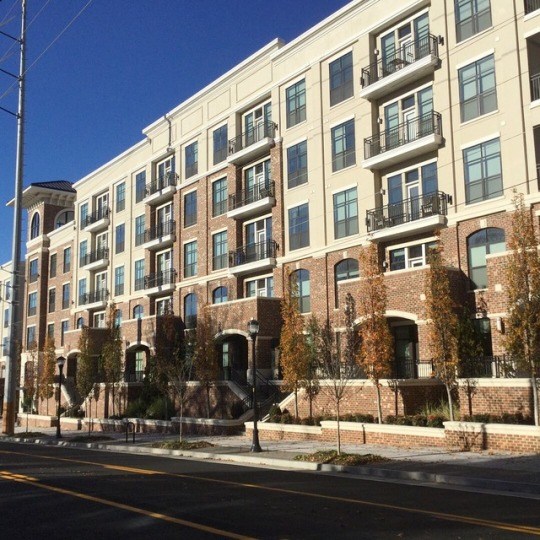When the real estate world tries to deliver walkability, many times the result is better classified as "drive-to-urbanism."
These developments have the trappings of a walkable place: sidewalks, street trees, compact form with a mix of retail and residential. But it's still very difficult to get there without a car.
Atlanta is full of these kinds of developments. At Atlanta the City, Darin Givens posted some photos illustrating how a place that should be transit-accessible can still be disconnected unless you drive. This apartment complex in northwest Atlanta looks very walkable, Givens says, but that's a facade:
The apartments end up only having a sheen of city-ness about them by being up against a nice sidewalk. In reality, I doubt anyone’s walking here, and with the lack of bike lanes, very few are cycling. It may look urban, but mobility behavior is bound to be suburban.
It’s not the developer’s fault. This is the available property that made financial sense to them and they likely followed code with the build out. Blame the city for not having a system for getting new developments aligned with connective pedestrian infrastructure (note that sidewalk maintenance is the responsibility of property owners in Atlanta, while car lanes are publicly funded).
And when we see stats that show a decline in MARTA ridership despite a significant rise in intown population over the last few years, that’s partly the city’s fault as well. We’re not supplying a pedestrian experience — for getting to and from bus stops — that’s able to compete with car ridership. When transit is unable to compete, cars win. No matter how urban the form of an individual structure is, it will struggle to be anything other than a drive-to destination.
Here's a shot of the closest bus stop:
Of course, superficial walkability comes in many forms. Outside of urban areas, "lifestyle center" malls built on greenfield sites in distant suburbs are another classic example of drive-to-urbanism. At places like Easton Town Center, outside of Columbus, Ohio, customers can walk from store to store, but the only way to get there is by car.
More recommended reading today: The Transportist proposes a rule of thumb for urban streets -- never have more than two lanes carrying general traffic in the same direction. And Reno Rambler considers why small and mid-sized American cities are having a hard time making bike-share systems viable.






